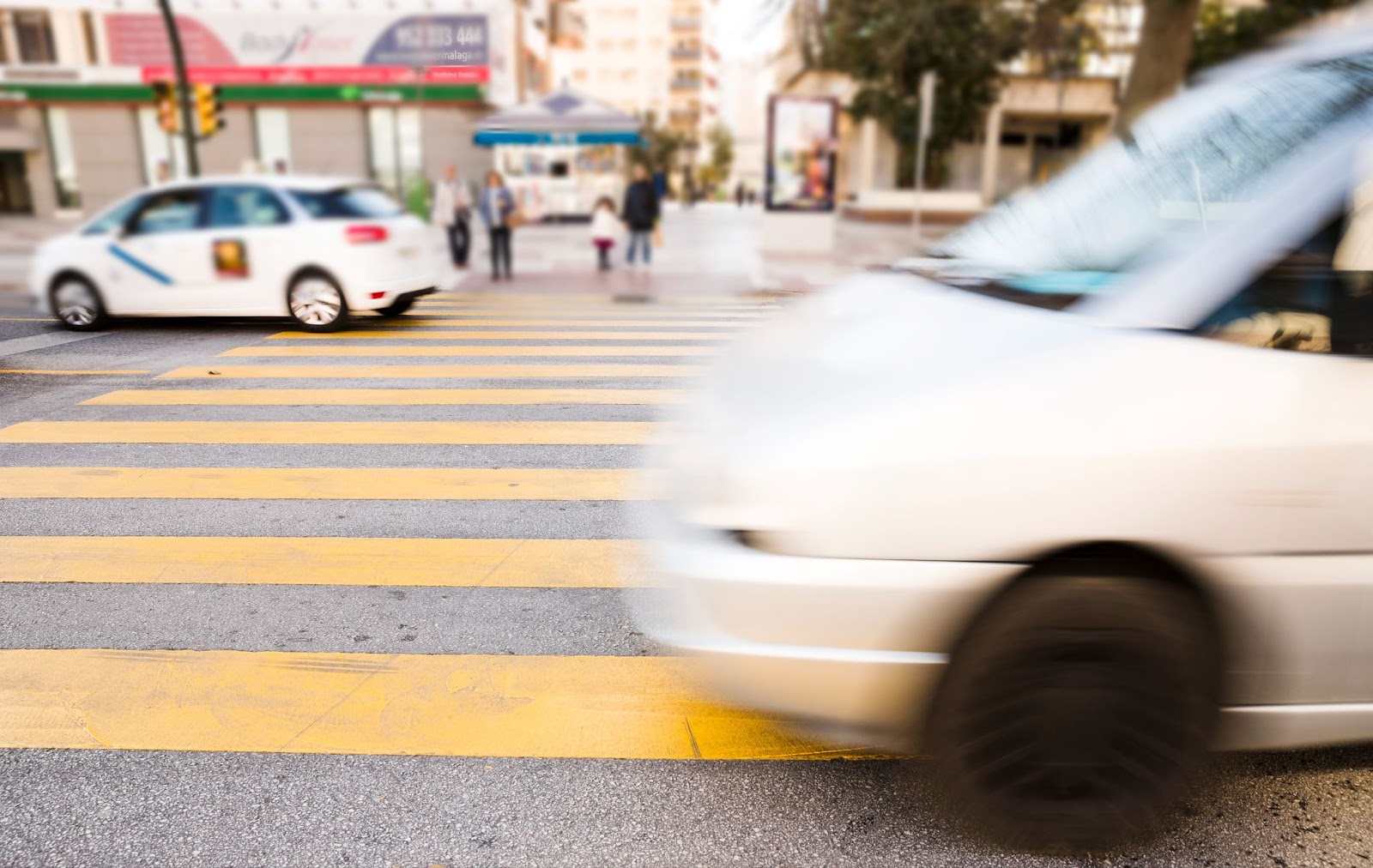
Imagine this: You’re walking home from work, just steps away from your front door, when suddenly a car veers onto the sidewalk. In a flash, you’re hit, and before you can even process what happened, the driver speeds away, leaving you injured and alone.
This nightmarish scenario isn’t just a hypothetical; it’s a stark reality for many.
In fact, in 2015, an estimated 737,100 hit-and-run crashes occurred (NHTSA, 2016), equating to one every 43 seconds in the U.S.
The 2,049 fatalities from hit-and-run crashes in 2016 marked the highest number ever recorded.
Understanding Pedestrian Hit-and-Run Accidents
The shock of a hit-and-run accident can leave victims feeling helpless and confused.
What Constitutes a Hit-and-Run?
A hit-and-run occurs when a driver involved in an accident with a pedestrian flees the scene without providing identification or rendering aid.
In Alabama, as in all states, leaving the scene of an accident is illegal and can result in serious criminal charges.
Common Causes of Pedestrian Hit-and-Run Accidents
- Distracted driving (e.g., texting, phone use);
- Driving under the influence of alcohol or drugs;
- Speeding or reckless driving;
- Poor visibility due to weather conditions or time of day; and
- Failure to yield right-of-way at crosswalks or intersections.
Immediate Steps to Take After a Hit-and-Run
- Seek medical attention immediately, even if injuries seem minor;
- Call 911 to report the accident and request law enforcement;
- Gather information from witnesses, if possible;
- Document the scene with photos or videos; and
- Write down any details you remember about the vehicle or driver.
Understanding these fundamentals can make a significant difference in the aftermath of a hit-and-run accident, potentially impacting the success of any future legal action.

Legal Framework in Alabama
Alabama’s laws provide a structured approach to hit-and-run cases, balancing punishment for offenders with protections for victims. Let’s explore the legal landscape that shapes these cases.
Alabama’s Hit-and-Run Laws
Under Alabama Code Section 32-10-1, drivers involved in accidents resulting in injury, death, or property damage are required to:
- Stop at or near the scene of the accident;
- Provide their name, address, and vehicle registration number; and
- Render reasonable assistance to any injured person.
Failure to comply with these requirements can result in criminal charges, including:
- Class C felony for accidents resulting in injury or death; and
- Class A misdemeanor for accidents causing property damage only.
Statute of Limitations
In Alabama, the statute of limitations for personal injury claims, including those arising from hit-and-run accidents, is generally two years from the date of the accident. It’s crucial to initiate legal action within this timeframe to preserve your right to seek compensation.
Understanding Alabama’s legal framework is essential for navigating the complexities of hit-and-run cases and ensuring your rights are protected throughout the legal process.
Legal Remedies for Hit-and-Run Victims
When the dust settles after a hit-and-run accident, victims often find themselves facing a maze of legal options.
Uninsured Motorist Coverage
One of the primary sources of compensation for hit-and-run victims in Alabama is uninsured motorist (UM) coverage.
This type of insurance can provide benefits even when the at-fault driver is not identified or located.
Key points about UM coverage in Alabama:
- It’s not mandatory, but insurance companies must offer it;
- It can cover medical expenses, lost wages, and pain and suffering; and
- Some policies may require physical contact between the victim and the hit-and-run vehicle.
Alabama Crime Victims Compensation Commission
The Alabama Crime Victims Compensation Commission (ACVCC) may provide financial assistance to eligible hit-and-run victims.
This program can help cover:
- Medical expenses;
- Lost wages;
- Funeral expenses (in cases of fatality); and
- Counseling costs.
To be eligible, victims must report the crime to law enforcement within 72 hours and cooperate with the investigation.
Civil Lawsuits
If the hit-and-run driver is identified, victims may pursue a civil lawsuit to seek compensation for:
- Medical expenses (past and future);
- Lost income and earning capacity;
- Pain and suffering;
- Emotional distress; and
- Property damage.
In some cases, punitive damages may be awarded to punish particularly egregious conduct.

Challenges in Hit-and-Run Cases
Hit-and-run cases present unique obstacles that can test the resolve of victims and their legal teams. Recognizing these challenges is the first step in overcoming them.
Identifying the Driver
The primary challenge in hit-and-run cases is identifying the responsible driver. Strategies to overcome this hurdle include:
- Reviewing surveillance footage from nearby businesses or traffic cameras;
- Canvassing the area for witnesses;
- Working with law enforcement to investigate vehicle debris or paint transfers; and
- Utilizing social media and community outreach to gather information.
Proving Negligence
Even when the driver is identified, proving negligence can be challenging.
Key elements that must be established include:
- The driver owed a duty of care to the pedestrian;
- The driver breached that duty;
- The breach caused the pedestrian’s injuries; and
- The pedestrian suffered damages as a result.
Dealing With Insurance Companies
Insurance companies may attempt to minimize payouts or deny claims.
Common tactics include:
- Disputing the severity of injuries;
- Arguing that the pedestrian was partially at fault; and
- Delaying claim processing.
Working with an experienced attorney can help protect your rights and maximize your chances of fair compensation.
Prevention and Safety Measures
While we can’t control the actions of others, we can take steps to reduce our own risk as pedestrians.
Proactive safety measures can make a significant difference in preventing accidents.
- Use designated crosswalks and obey traffic signals;
- Wear reflective clothing or carry a flashlight when walking at night;
- Avoid distractions like texting while walking;
- Make eye contact with drivers before crossing; and
- Walk facing traffic when sidewalks are not available.
By adopting these safety practices, pedestrians can significantly reduce their risk of becoming victims of hit-and-run accidents, contributing to safer streets for everyone.
Frequently Asked Questions
Navigating the aftermath of a hit-and-run accident can raise numerous questions.
Here are answers to some of the most common concerns we receive about hit-and-run cases in Alabama..
What if I Can’t Afford Medical Treatment After a Hit-and-Run Accident?
Seek immediate medical attention regardless of your financial situation. Many healthcare providers will work with accident victims to arrange payment plans.
Additionally, your attorney can help you explore options such as medical liens, which allow you to receive treatment with the cost deferred until your case is resolved.
Can I Still Receive Compensation if I Was Partially at Fault for the Accident?
Yes, Alabama follows a contributory negligence rule, which means that if you were even slightly at fault, it could affect your ability to recover damages.
However, in hit-and-run cases, the driver’s act of fleeing the scene often outweighs minor contributory negligence. An experienced attorney can help navigate this complex area of law.
How Long Does It Typically Take to Resolve a Hit-and-Run Case?
The timeline for resolving hit-and-run cases can vary significantly. If the driver is quickly identified and insurance coverage is available, a case might be settled in a few months.
However, if the driver remains unidentified or if litigation is necessary, the process could take a year or more. Your attorney can provide a more accurate estimate based on the specifics of your case.
Can I Pursue a Case if I Was Hit While Jaywalking?
Yes, you can still pursue a case even if you were jaywalking. While jaywalking may be considered contributory negligence, it does not automatically disqualify you from seeking compensation, especially in a hit-and-run situation.
The driver’s duty to stop and render aid remains regardless of the pedestrian’s actions.
Fight Harder, Fight Smarter
Don’t face the aftermath of a hit-and-run pedestrian accident alone. At Baxley Maniscalco, we understand the challenges you’re facing and are here to help.
Our experienced team of attorneys specializes in pedestrian accident cases and has a proven track record of success in hit-and-run situations.
Contact us today for a free, no-obligation consultation. We’ll review your case, explain your options, and help you take the next steps toward recovery and justice.
Remember, time is of the essence in these cases. Don’t delay in seeking the legal support you need and deserve.
Can't find what you're looking for? Search our site below.










